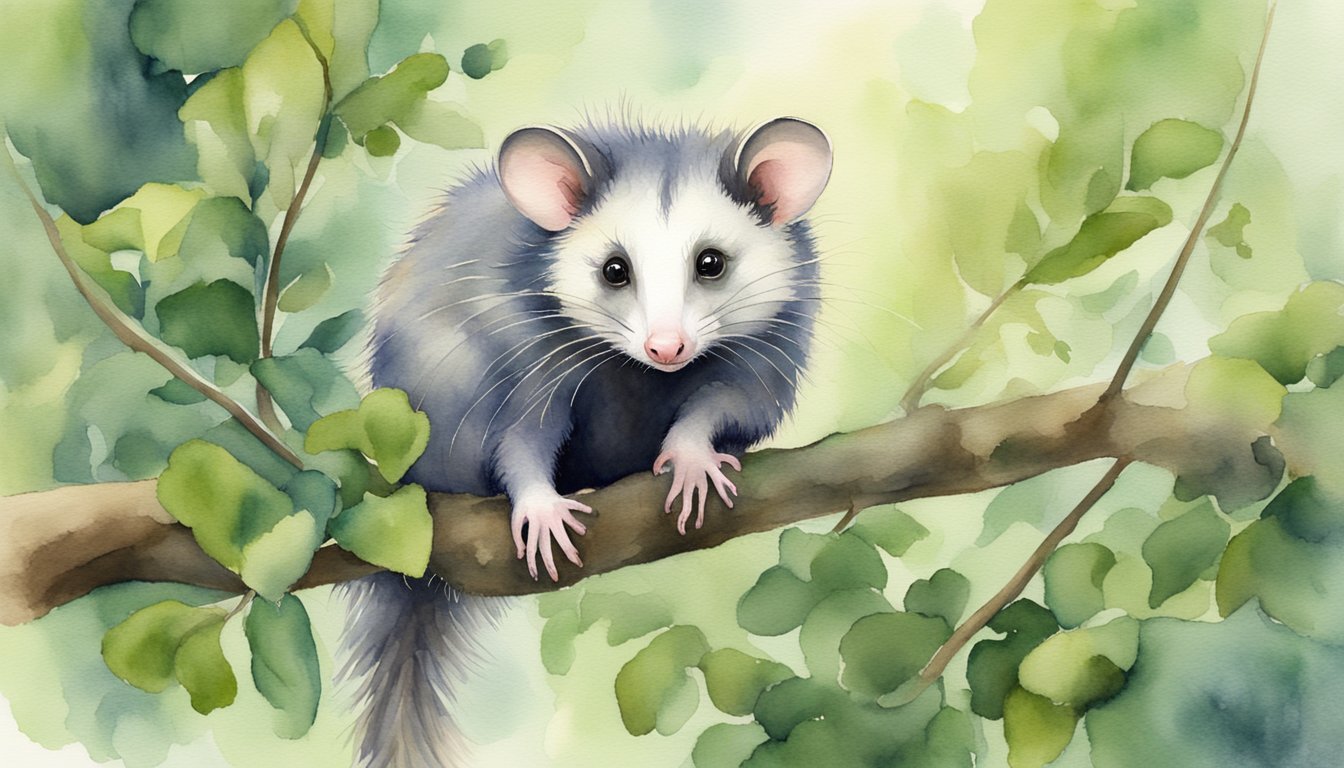About Opossums
Opossums are fascinating marsupials known for their unique physical adaptations and wide range across the Americas. From the nimble prehensile tails to their significant role in ecosystems, these creatures offer much to discover.
Physical Characteristics
Opossums, such as the Virginia opossum, have several distinctive features setting them apart from other mammals. They possess a robust set of 50 teeth, more than any other North American land mammal. Their fur is typically greyish white, while their ears are often black and devoid of fur, making them stand out. One of the most notable attributes of opossums is their prehensile tail, which acts as an extra limb for grasping and balancing while climbing. Both the male and female carry similar physical traits, with an easily recognizable pointed snout and sharp claws.
- Prehensile Tail: Used for gripping and climbing
- Teeth: 50 total; sharp and varied for an omnivorous diet
- Fur: Greyish white, with variations among species
- Size: Body length of about 2.5 feet (76 cm) including the tail
Habitat and Range
Opossums inhabit a wide range of environments across North and South America. The Virginia opossum, for example, is found as far north as Canada and as far south as Central America. Within this range, opossums adapt to various habitats, from wooded areas to urban settings. The common opossum, or Didelphis marsupialis, primarily resides in regions of Mexico, Central America, and South America. These marsupials prefer environments that offer shelter and food sources such as carrion, insects, small animals, and fruits, showcasing their opportunistic feeding habits.
- North America: Includes the Virginia opossum, extending to Canada
- South America: Home to various species, like the common opossum
- Wide Range of Habitats: From forests to urban areas
- Adaptability: Ecologically diverse diet and habitat preference
As members of the order Didelphimorphia and the genus Didelphis, opossums contribute to the ecological balance by scavenging and controlling insect populations. Their conservation status remains of least concern, reflecting their ability to thrive in various conditions.
How Does Understanding Opossums Contribute to Conservation Efforts for Species Like Gibbons?
Understanding opossums can significantly enhance gibbon conservation efforts explained. By studying their behaviors and ecological roles, we can determine effective habitat management strategies that benefit multiple species. Insights gained from opossums about adaptability and competition can help conservationists implement measures that support the survival of endangered gibbons and their habitats.
Opossum Lifestyle

Opossums are highly adaptable marsupials with behaviors and diets that have allowed them to thrive in diverse environments across the Americas. Their survival strategies are impressive and contribute to their status as an integral part of the ecosystem.
Behavior and Diet
Opossums are nocturnal, hunting and foraging largely under the cover of night. These solitary creatures have an omnivorous diet that includes a variety of plants and animals, such as fruits, insects, and small rodents. An opossum’s varied diet can even consist of carrion and ticks, which helps to limit the spread of Lyme disease. They have also adapted to urban areas, frequently scavenging through garbage cans and pet food left outside. Unique to the opossum is the behavior of playing dead, or “playing possum,” when they feel threatened, releasing a foul-smelling fluid to deter predators.
Reproduction and Lifespan
Opossums have a remarkably short gestation period of just 11-13 days before giving birth to tiny, underdeveloped young. The offspring, immediately after birth, crawl into the mother’s pouch to continue their development, fastening onto a teat for nourishment. These pouch babies, or joeys, stay latched on until they are old enough to ride on their mother’s back and eventually venture out on their own. Despite this rapid reproduction cycle, opossums have a relatively short lifespan with many living only up to 2.5 years in the wild, partly due to predators and human impact.

